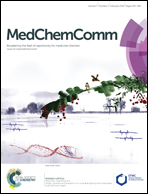Abstract
Seven β-aryl-substituted γ-alkylidene-γ-lactone analogues of rubrolides were synthesized from mucochloric acid and converted into their corresponding γ-hydroxy-γ-lactams (76–85%) by a reaction with isobutylamine and propylamine. Further dehydration of the γ-hydroxy-γ-lactams led to the corresponding (Z)- and (E)-γ-alkylidene-γ-lactams (23–45%). All compounds were fully characterized by spectroscopic methods. These 14 compounds, together with 32 other rubrolide analogues, were assayed against four human tumor cell lines (HL-60, leukaemia; HCT-116, colon; SF-295, central nervous system; and OVCAR-8, ovarian). Of the 46 compounds assayed, 7 caused a large reduction in cell viability (% RCV > 80%) in the tested cell lines and the most active compounds had halogen substituents on the aromatic ring. Compounds 10a and 14i were the most active (RC50 = 3.00 and 3.58 μM, respectively) against HL-60 and were not cytotoxic to L929 normal cells at the concentrations tested (RC50 > 50 μM). To further understand the mechanism underlying the cytotoxicity of 10a and 14i, studies involving DNA fragmentation, cell cycle analysis, phosphatidyl serine externalization and mitochondrial depolarization were performed in the HL-60 cells, using doxorubicin as a positive control. The results indicated that the cytotoxicity of 10a and 14i involved the induction of cell death by apoptosis. The cell cycle analysis showed that 14i caused the accumulation of cells in the G0/G1 phase at 2.5 and 5 μM.


 Please wait while we load your content...
Please wait while we load your content...